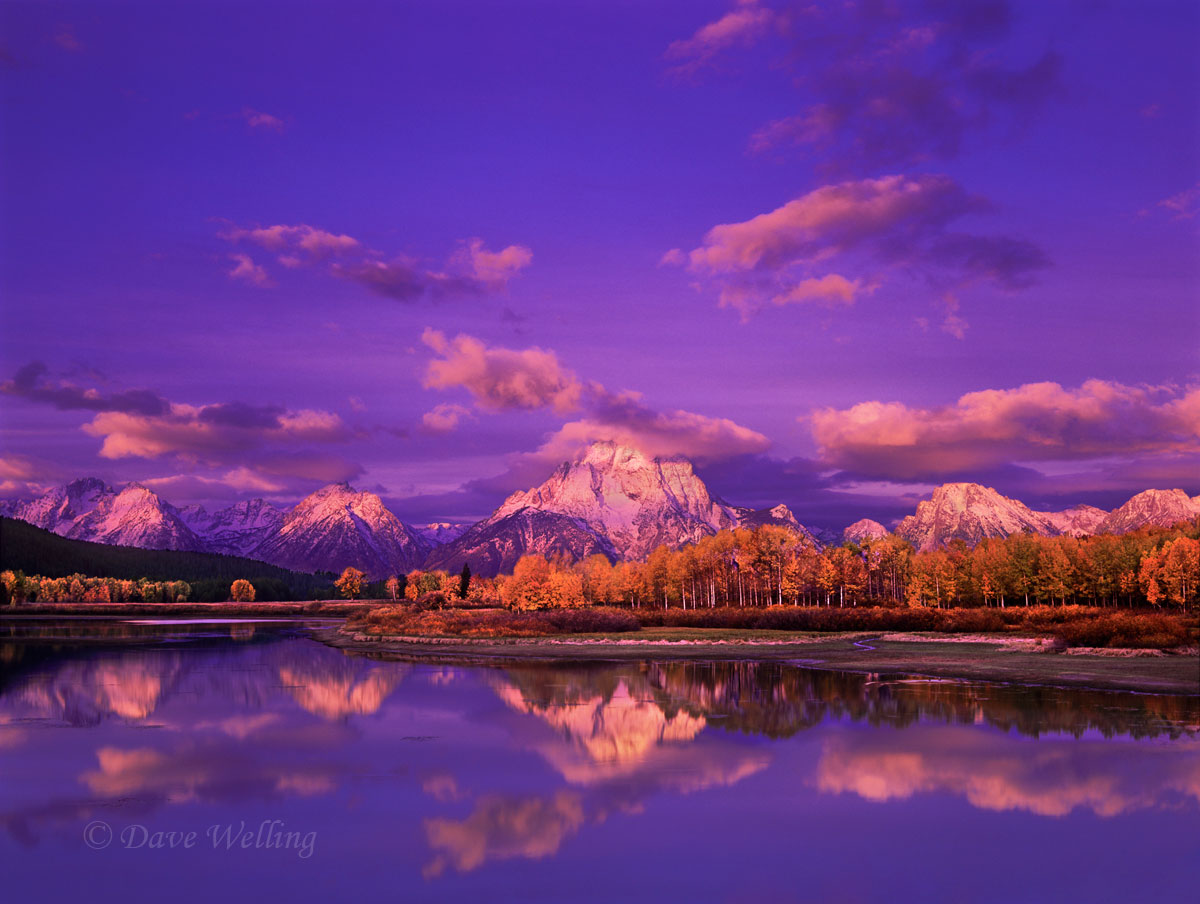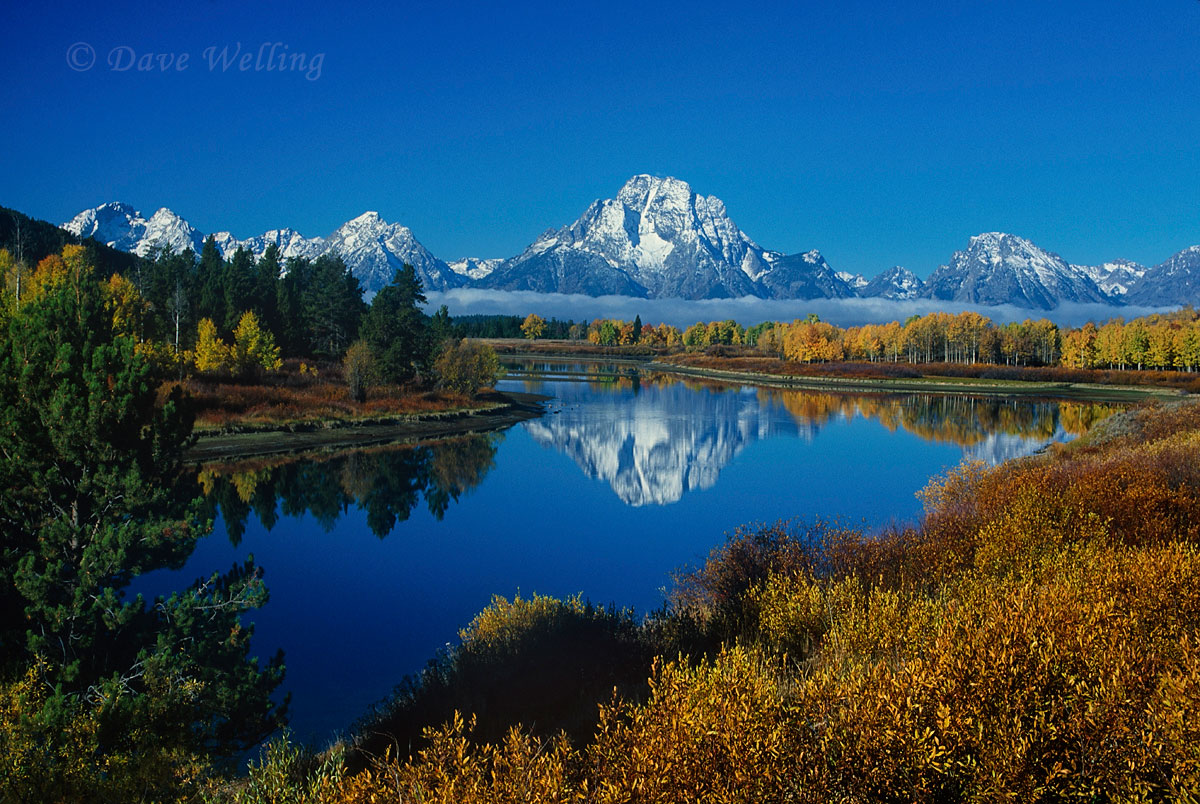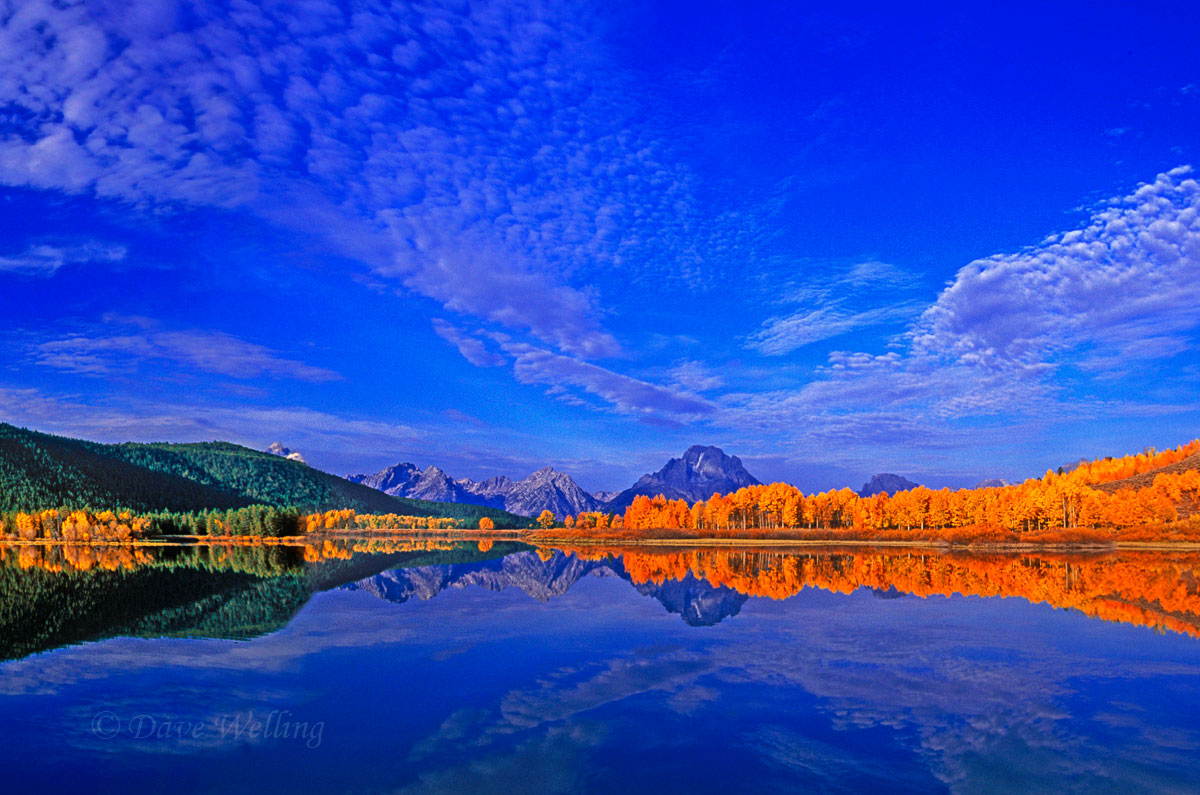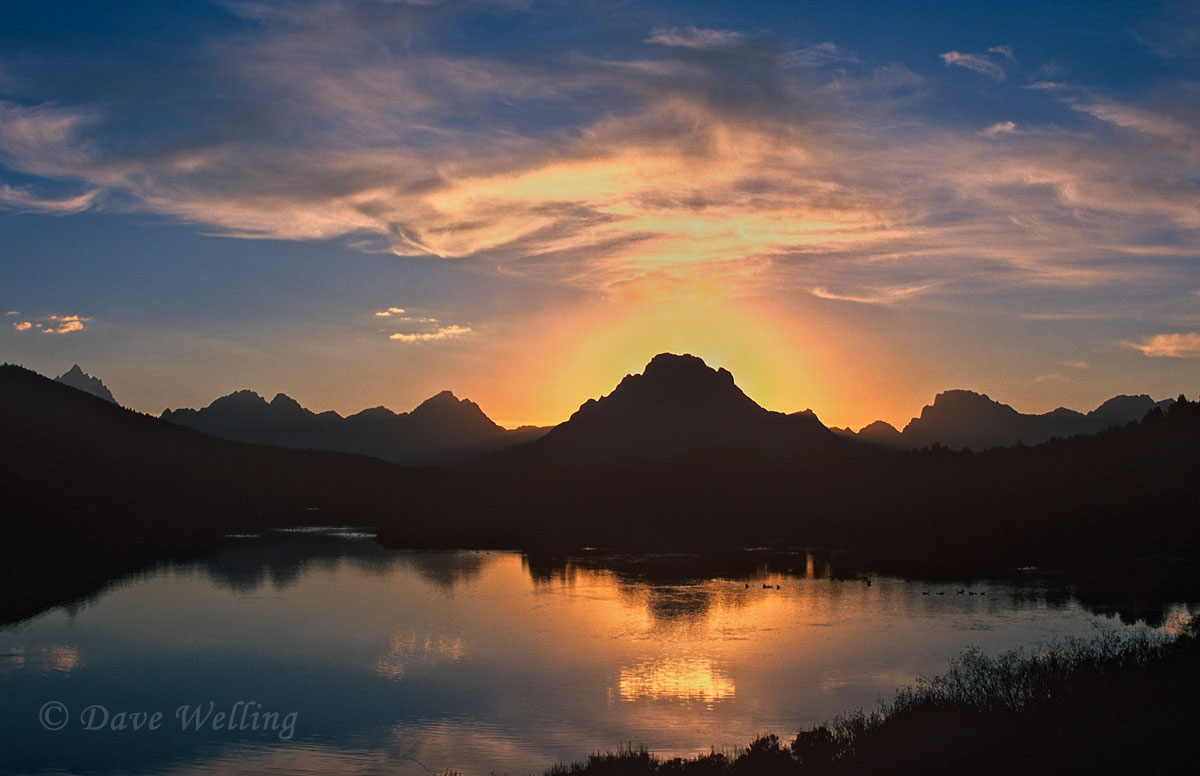When you see a great landscape, do you just jump from your car and take a quick snapshot? If you do, it probably doesn’t do the scenery justice. These photos of iconic photographic locations, like Oxbow Bend in Grand Tetons National Park, are usually boring, "one and done" snapshots that impress no one. Instead, learn to use natural light, your physical location for capturing the image, and lens perspective to create stunning landscape images.
Great photography requires great light, so research your location to determine the time for best lighting. For example, The Tetons and Oxbow Bend are best photographed looking West; so sunrise is usually the best time for great light. Beautiful sunrise light is short-lived so arrive early. During the fall season, the sun does not rise directly behind you. Instead, it comes up slightly to the north providing angled light giving your image a three-dimensional quality.
The images you see here were all captured from the same general location during one fall day. Compare the featureless, late-morning snapshot of Oxbow Bend below with the more vibrant sunrise image. I took the sunrise image on a cool fall morning and hung around till late morning when the tourists arrived, jumping from their cars for quick snapshots of blank skies. I came much earlier when I knew low angled light would give my image depth, saturated color and tonal glow.
I also wanted a simple composition that featured the key components of the scene so I took the sunrise image from a slightly different location than the late morning image. Using a longer lens to reduce the extraneous foliage in the mid-morning shot, I emphasized the mountains and amazing alpenglow on Mount Moran. The morning clouds at sunrise were also a definite improvement on the blank blue sky in the late morning image.
After capturing your sunrise image, look for different interpretations of the scene. Move around, using your viewfinder or LCD display to check different perspectives and compositions. Exclude anything that does not contribute to the quality of the image. For my sunrise image, a longer lens omitted the busy foreground, and made the Mountain the point of interest. During fall, quality morning light lasts longer, giving you additional time to find other compositions before dull mid-day light takes over. This morning image was taken a short distance from the sunrise location using a wide angle lens to capture the Snake River, the brilliant fall colored aspens and the Big Sky grandeur of this Montana location.
Sunrise is usually the best light; however, sunset light can also provide some interesting compositions. In the image below, the sunset silhouettes the Tetons with a partial solar halo around Mount Moran, changing the scene completely. Look at the difference in the sunrise and sunset images even though taken from almost the same spot. Now you have a striking, moody image to complement your soft, sweet light alpenglow sunrise image. Use your camera histogram to check your exposures. Sunrise and sunset both have wide tonal ranges and you don't want to underexpose with no features or overexpose with blown out highlights. If you have a wide tonal range you can take bracketed exposures and combine the image using HDR techniques to even out tonality.
About the author: Dave Welling is a full time professional photographer specializing in wildlife, landscape and nature with over 75,000 6x7, 6x4.5, and 35mm film and digital images. He has been capturing evocative images of the natural world for over 25 years, producing the highest quality images for publication. His images often capture unique behavioral characteristics of wildlife or special lighting or weather conditions of landscapes. You can see more of his work at www.strikingnatureimagesbydavewelling.com.
Have something to add to the story? Leave a comment or email editor@outdoorphotographyguide.com.




I agree wholeheartedly with what you say in this review, but this mindset is not always possible or practical. When I get the chance these are my goals. The opportunities are few and far between but I try to follow these 'rules' For the vast majority of non pro photographers, these sites and sites like them are taken in as part of a day out with the family, generally while on holiday, or come across as part of a working day. In my case, I generally have to make the most of whatever light is available at the time of arrival. For me, and I suspect the vast majority, time and funds are a huge factor. I don't believe this make me any less 'artistic' Excellent shots, by the way, although to my mind, a little over-saturated (especially no.3).
I love your photos and your great suggestions. Thanks sooo much! Just one question, what camera do you use? I'm thinking of upgrading from my Canon 5D Mark III.
Just a thought. I understand the issue with being on a tour. My girlfriend and I have changed the way we travel. For one thing, we do WAY more driving around the USA, then foreign places. But when we do go overseas, we plan the trips ourselves. If you read descriptions of tours, you can pick and chose the places you want to go and do it on YOUR time. If you are visiting Outdoor Photography Guide, you must want to improve your photos, and this way you have the freedom to chose when you shoot what. Timing means so much in photography!
I love your images of Grand Tetons. I was there in October of 2018 and saw them with their first snow covering and morning fog! The images were dramatic, but I still need to post process them for top of the line images! When a photographer is on a tour, the time of day is "whenever" unfortunately!
I’ve taken numerous photos from Oxbow Bend. Most of the time in the daylight. I drive tours. Not an option for the prime time photos. Your photos I’ve seen before.
Hi Dave. Great article and photos to help explain. Just a technicality, but I'm actually a park ranger at Grand Teton National Park, and it, which would then mean Oxbow Bend, as well, is in the state of Wyoming, not Montana. ;-)
Great tutorial and fantastic images to illustrate it.
Hello Dave, all your shots are stunning and I appreciate the time & effort you put in to tell us how photos look at different times of the day & light - a wonderful learning experience. But I agree 120% with CG. Why? a) Not an early riser, so at best my day begins at 7 AM after a heart breakfast. b) Our arrival at a photogenic travel sight is often dictated by the Travel Guide or the Tour Schedule - I use mostly Thomas Cook on Group Tours - so a sunrise / sunset arrival may not happen. Example arriving at the Colosseum in Rome at noon. c) So Dave, we need some tips to shoot in the harsh noon sun, especially of the wife & kids without squinty eyes and deep shadows beneath the eye sockets. Remember tourists don't carry reflectors or huge flash guns, as most of us have only our DSLRs with the built in flash. d) We do not have enough time at any single tourist destination like Dave the Pro, as the Tour Guide keeps pushing us to maintime schedule. So we make the best use of the situation to capture memories of our visit. e) Others. Your professional help is welcome in these situations Dave.
Sweet images, the top one is killer! The bottom one is wonderful, as well. Thanks for sharing.
Hi Dave, those are all great picture and are great examples of the time you took to compose different results based on the type of light and contrast at different times of day. Nice job! I guess I am not an artist, but more of a realist, so I like your late morning shot the best. That is the one that I would frame on the wall. While I get the desire to want to make the best artistic or complex shot, some of us just want the picture of the object, like the mountain. Maybe it is just me, but I think some people spend too much time in trying to be artistic and they lose the beauty of the subject itself. ... Just my two cents.